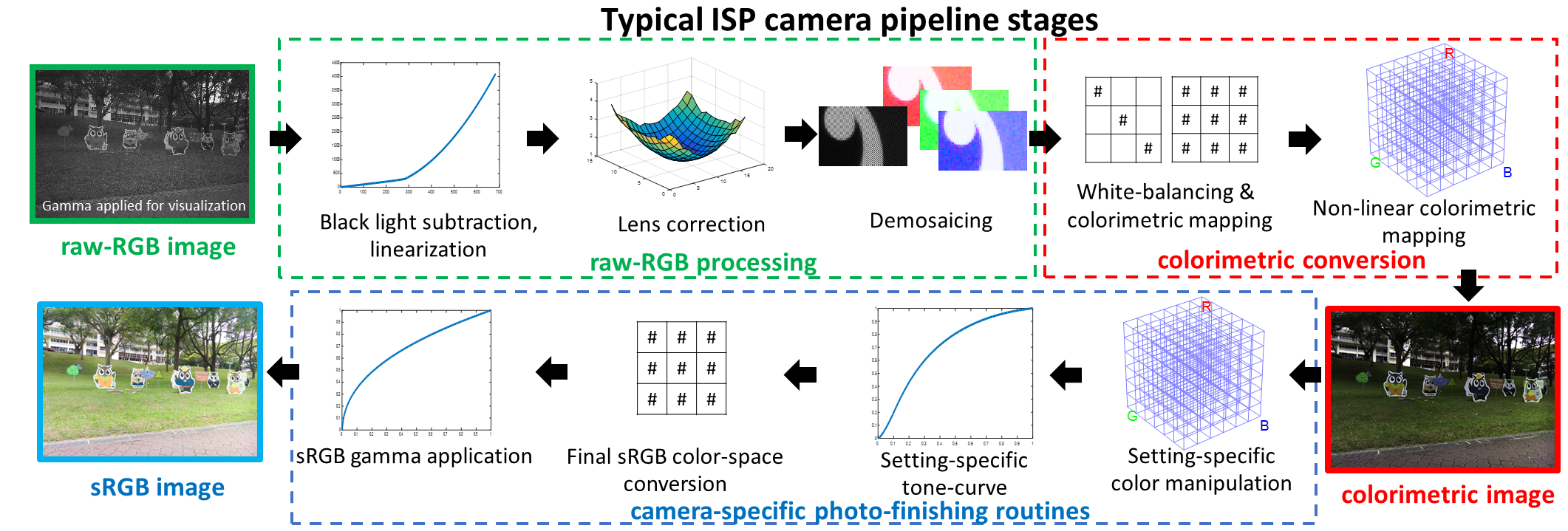Beyond raw-RGB and sRGB: Advocating Access to a Colorimetric Image State

Abstract
Most modern cameras allow captured images to be saved in two color spaces: (1) raw-RGB and (2) standard RGB (sRGB). The raw-RGB image represents a scene-referred sensor image whose RGB values are specific to the color sensitivities of the sensor’s color filter array. The sRGB image represents a display-referred image that has been rendered through the camera’s image signal processor (ISP). The rendering process involves several camera-specific photo-finishing manipulations intended to make the sRGB image visually pleasing. For applications that want to use a camera for purposes beyond photography, both the raw-RGB and sRGB color spaces are undesirable. For example, because the raw-RGB color space is dependent on the camera’s sensor, it is challenging to develop applications that work across multiple cameras. Similarly, the camera-specific photo-finishing operations used to render sRGB images also hinder applications intended to run on different cameras. Interestingly, the ISP camera pipeline includes a colorimetric conversion stage where the raw-RGB images are converted to a device-independent color space. However, this image state is not accessible. In this paper, we advocate for the ability to access the colorimetric image state and recommend that cameras output a third image format that is based on this device-independent colorimetric space. To this end, we perform experiments to demonstrate that image pixel values in a colorimetric space are more similar across different makes and models than sRGB and raw-RGB.
Publications:
- Karaimer H.C., Brown M.S. (2019) “Beyond raw-RGB and sRGB: Advocating Access to a Colorimetric Image State”, Color and Imaging Conference (CIC`19), Oct 2019 [pdf] [bibtex]
Code and Data
Please download the code and data here and view the readme file here.
People
Hakki Can Karaimer, karaimer (at) eecs.yorku.ca
Michael S. Brown, mbrown (at) eecs.yorku.ca